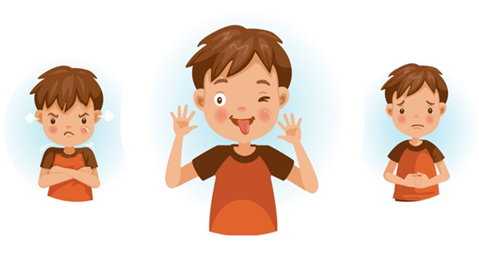1st post in the series.

Live wires and bonfires
‘Ooh he’s a lively one!’
‘Oh, bless him, he’s such a live wire!’
‘He’s adorable, he’s just such a bundle of energy isn’t he. He’s so bouncy!’
‘He’s like a little Tigger.’
‘I bet he sleeps at night?’
‘You’ve got your work cut out for you there!’
These are all phrases attributed to my youngest son so many times that I gave up counting a long time ago. It seemed for a while like we could never enter a shop/café/library/medical surgery without somebody passing a comment. Usually delivered with a half-hearted chuckle and smile. I of course would oblige and play the conversational game; ‘Oh he certainly is/You don’t know the half of it/Tell that to my sofa/Even Tigger would be tired etc’ coupled with some sort of implied exhaustion, a tussle of his hair and a quick exit. Very quickly though it stopped being funny. I played the game not wanting to be abrupt or hurt the feelings of a well-meaning stranger but increasingly, I became more and more frustrated as my own levels of real-life exhaustion began to grow.
What they didn’t see was the reality that was staring them in the face. My son is not ‘a live, wire’ nor is he ‘bouncy’ or even remotely ‘Tigge-like’. What he is is a very hurt and confused little boy trying to manage the emotions of the very real adult threat that pervades his experience of the world. Adults for him are not the safe base of security from which he is able to navigate the world but instead they are a dominating and frightening force to be distrusted and feared. His early life experiences have taught him this and no amount of casual interactions with well-meaning strangers are going to change this.
When we adopted him and his brother age 3 and 4 they had both experienced a catalogue of complex and frankly shocking events. I would challenge any adult to put themselves in their shoes and then see how ‘lively’ they felt afterwards. Having survived extreme neglect and abuse at the hands of their primary caregivers their life experience had taught them a simple lesson; people aren’t reliable. My eldest son displayed this quite clearly. For a long time, he was rejecting, angry and aggressive. He was hurting and was not afraid to show it. As his emotions smouldered, smoked and erupted for all the world to see, he seemed unable to contain it. Regardless of the occasion, location or company, when things got too much it was time to batten down the hatches and wait for the fire to burn itself out. Only then could any repair work begin to take place.
My youngest son conveyed his emotional state by becoming hyper vigilant to the needs and emotions of those around him. Seeking to please and receive approval, he was unafraid to win the crowd over in any way he could. What translated as ‘adorable’ interactions where his attempt at managing the emotional state of others. Afterall, a happy person can’t get cross with me unless I keep them happy ALL THE TIME!
As he moved from Nursery to Reception, these behaviours became apparent and were perpetuated further as he embarked on his transition to Key Stage 1. ‘He just will NOT sit in his chair,’ one irate teacher told me. ‘He follows me around the room and is desperate to show me everything he’s done. I have to constantly tell him he needs to sit down and have a go.’ I nodded in all the right places but inside I cringed. I had explained to the school several times about the boys’ past, about their experiences and how they may communicate some of this through their behaviours. I had reassured them that we were aware of this as a family and were seeking support for all of us. Still the problem persisted. Not because of my son but because there was a lack of understanding around his needs.
Teaching is nothing without relationships. If you have no relationship with the children in your class how can you hope to teach them anything? Would you listen to somebody who knew nothing about you or who showed no interest in who you were as a person. Not a learner but a person, whole and complete. How can we build a relationship then if we don’t take the time to understand the children in our care (and I include the word ‘care’ here for a reason)?
Fast forward another two years and my son has a good relationship with his current teacher. He speaks highly of her as his ‘best teacher’ and his behaviour tells me a lot about how safe he feels around her. However, he sobbed the day before schools were due to reopen. Not because he didn’t want to go back, not because he didn’t want to do Maths, English or Science and not because of COVID. He sobbed because he didn’t know if he was going to have his teacher all day or not. Having attended school as part of the ‘Keyworker’ groups his experience of school had changed once again, and the metaphorical rug had been whipped out from under him. Some days he was in his own class, some days he wasn’t. Some days he had his class teacher and other days he didn’t. He had started the year using one entrance to the school and now had to use a different entrance. Yet again, his needs were being overlooked. Because he is not aggressive nor loud or disruptive, he will simply try his best in whatever way he is able to. He needed to know if that figure of safety would be present for him when there were going to be more children around to compete with.
The whole world is in turmoil and nothing is as it was or as it seems but perhaps COVID can teach us more than how to operate a zoom call or how to carry out a Phonics lesson on Microsoft Teams. Perhaps this feeling of uncertainty, of fear and apprehension that we have all come to know and try to make peace with, could be the eye opener we all need to illustrate how some children experience the world every day. For those children who have lived through neglect, lived through abuse or have experienced separation and being placed in the care of strangers the world can be a scary and frightening place and it is our job to look out for that, to address it and CARE for all of their needs in the time they spend with us.
Written by John Clarke, Early Years Education Lecturer

